Diane von Furstenberg Is the Toast of Brussels
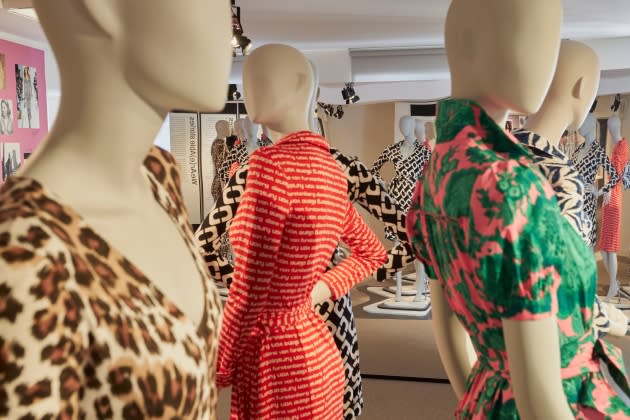
“It’s truly going back to the roots,” Diane von Furstenberg said Tuesday as a black sedan ferried her from the Royal Greenhouses of Laeken back to her hotel in central Brussels, a stone’s throw from the Fashion & Lace Museum that just opened an exhibition dedicated to her.
It was a poignant homecoming for the Belgian fashion designer, who spoke to 70 grade-12 students at the public school she attended until age 13, following in the footsteps of her mother, Liliane, a Holocaust survivor ultimately banished from study when “racial laws” came into effect during World War II.
More from WWD
“I told them how important the school was to me and to my mother,” she related. “I hope I managed to inspire 20 of them.”
The designer was the toast of the town on Tuesday night when Mayor Philippe Close hosted a dinner in her honor at Brussels Town Hall, the medieval landmark lording over Grand-Place, the main square.
Guests including her travel buddy Christian Louboutin, Italian author Giuliano da Empoli, film producer Fabiola Beracasa Beckman and antiques, art and interiors guru Axel Vervoordt were invited to step onto the balcony and gaze upon the artfully lit buildings — a privilege usually afforded only to foreign heads of state.
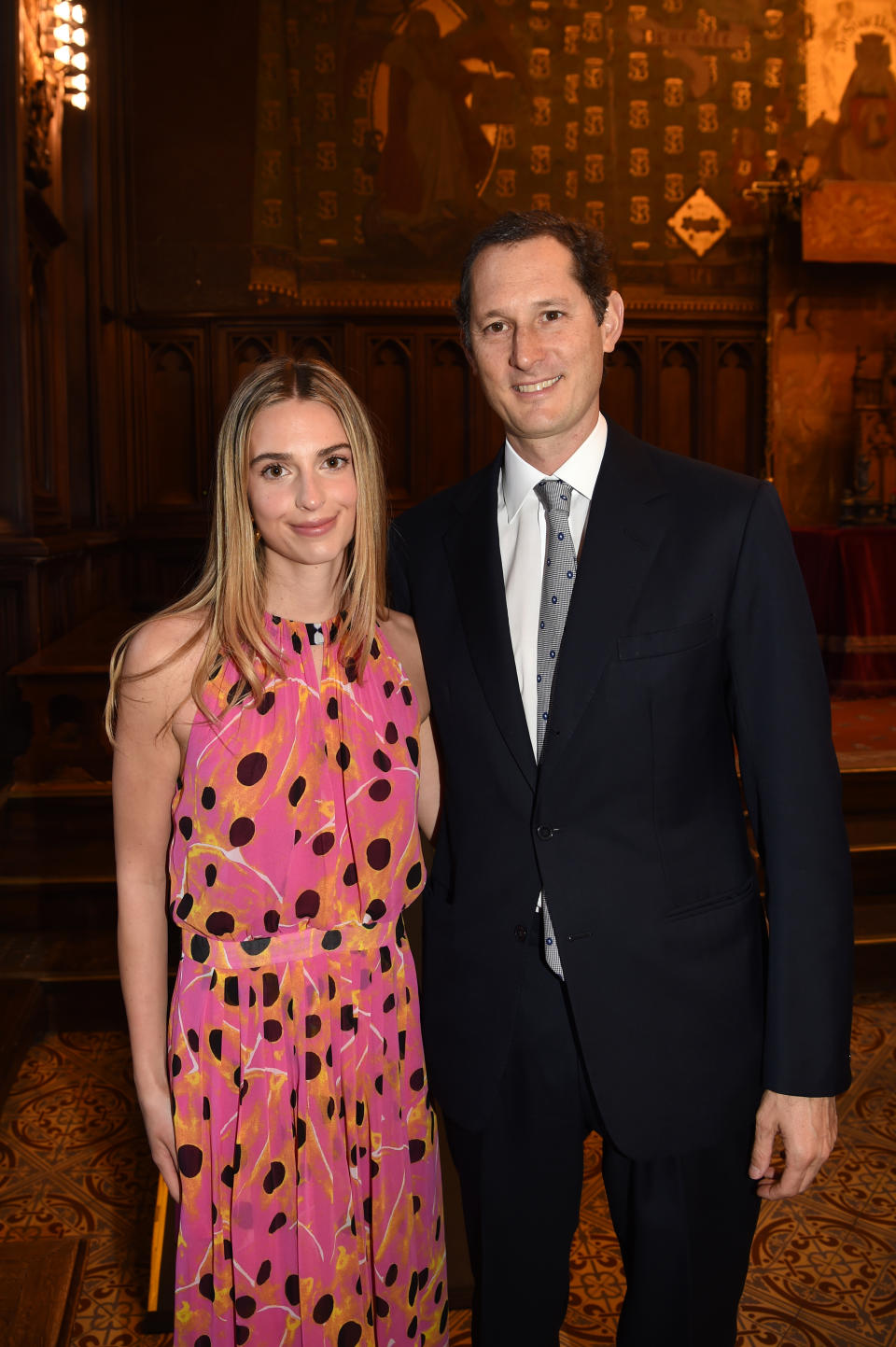
Close raised a glass in tribute to von Furstenberg’s perseverance, intuition, style and “sense of beauty.”
The designer noted her parents were married in a neighboring wood-lined room at the city hall. At the dinner there, two long tables were laden with flowers and tiny, battery-powered wire sculptures of flowers and dragonflies. Waiters donned bowler hats topped with big red lips — a frequent print motif of the designer’s on view at the museum.
The compact exhibition, on view until Jan. 7, 2024, suggests that von Furstenberg is emblematic of designers from the Wallonia region — less famous than their Antwerp cousins, but globally minded, down-to-earth and fun-loving.
Those were the conclusions of a 2021 exhibition at the Fashion & Lace Museum, “Brussels Touch,” that sought to distill the characteristics of designers from the city and graduates of its famous fashion school, La Cambre.
But the exhibition,”Woman Before Fashion,” paints a much broader picture of von Furstenberg’s legacy and her vivid brand DNA, intertwined with the advancement of women, art movements, popular culture and the democratization of fashion.
For a European audience, it’s also a chance to discover a penultimate example of the “American Dream,” propelled by the designer’s landmark 1974 design, the wrap dress in printed jersey, and her personal charisma, whether on the shop floor of Bonwit Teller or as the president or chairwoman of the Council of Fashion Designers of America, titles she held from 2006 to 2019.
Nicolas Lor, head of exhibitions and publications at the museum, constructed the von Furstenberg showcase roughly in the same way he discovered her personal story, delving first into the deep thinking behind her designs, and then the various chapters of her career, now dedicated largely to women’s empowerment as she prepares to pass the torch to her heirs and possibly expert partners.
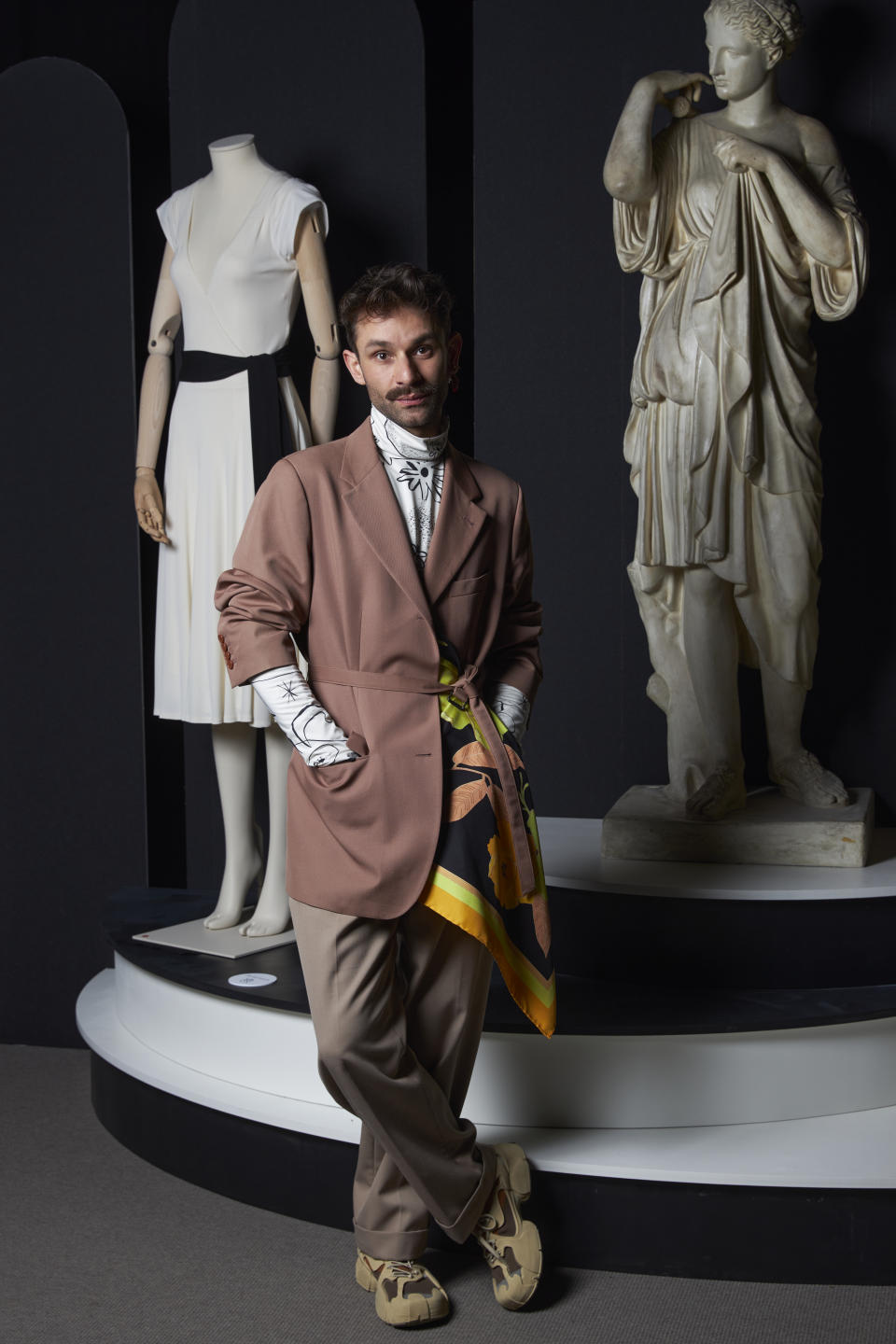
Lor argued that her wrap dress, marking its 50th anniversary in 2024, is as relevant today as it was in the ’70s because it epitomizes a “design object,” something practical, useful, produced on an industrial scale and incorporating specific features — most notably her inimitable prints.
“She’s kind of untouched by trends,” he marveled, emphasizing the “continuous idea” behind her designs, which is distinct from fashion designers who dream up different themes and narratives for each seasonal collection.
The exhibition’s title comes from one of Lor’s first conversations with von Furstenberg, who stressed her wish to always exalt the woman first.
It unfurls over four levels with this logic, starting with fashion and reaching a crescendo with the women, famous or otherwise, who have worn the wrap dress and the women from various fields the designer is championing through her DVF Awards and In Charge platform.
Lor chose to display the wrap dress in a white muslin version to exalt features that can be obscured by busy prints: the collar that lays flat, the buttonless cuffs and the neat, flaring skirt. He draws analogies to the Japanese kimono, a garment based on a “wrap system”; the draped peplos, depicted on an ancient Greek statue of Diana of Gabii, and to the uniforms von Furstenberg wore as a student at Lycée Henriette Dachsbeck, or a dancer’s body-hugging rehearsal gear.
The curator posits von Furstenberg among a continuum of women designers whose fashions were conceived for daily life, yielding purposeful, versatile, thought-out and stylish designs.
This illustrious group includes Gabrielle Chanel, who started out with sportswear made of jersey fabrics then used primarily for sailor tops and men’s undergarments, and Madeleine Vionnet, whose bias cutting offered women the same freedom of movement and body-caressing sensuality von Furstenberg always extols with her garments.
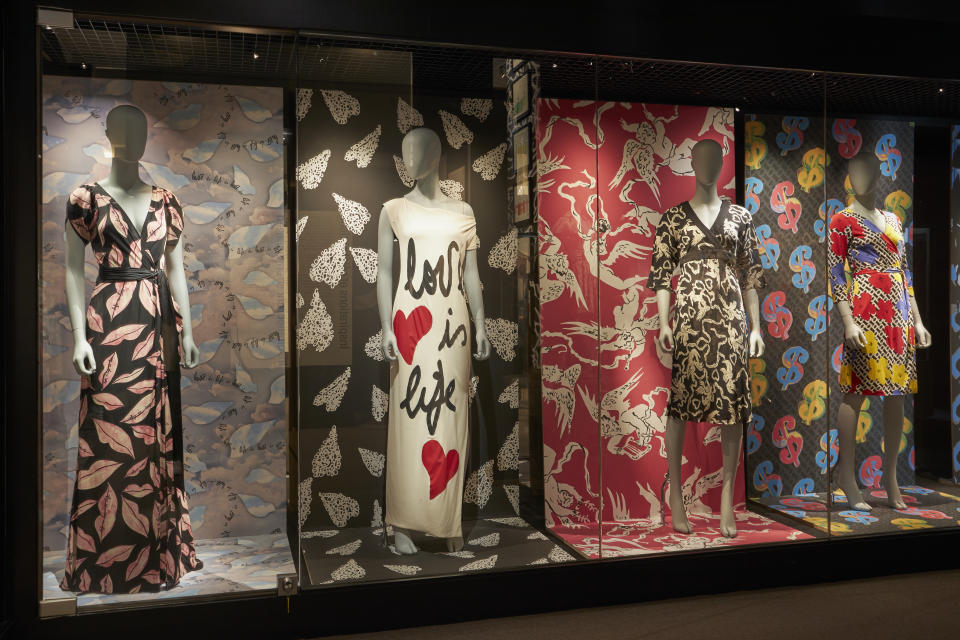
During her visit to the royal gardens, von Furstenberg and members of her creative team snapped dozens of photos of gnarled tree branches, geometric blooms and tightly coiled palm fronds, which relate to one of her recurring print stories: nature.
Lor plastered a wall with such snapshots of flora, fauna and cobblestone pathways, though such motifs are often abstracted on the jersey fabric. “Rocks or giraffe? We’re never sure,” he said, pointing to a wrap dress bearing a mottled, geometric pattern.
Art-inspired motifs, nourished by her close relationships with the likes of Andy Warhol and Fran?ois-Marie Banier, also recur frequently.
Von Furstenberg gave Lor full access to her personal archive, which includes numerous binders of meticulous press clippings from the late ’60s through to today. She also offered some personal finishing touches to the display, scrawling personal messages with a Sharpie on the timeline that opens the exhibition, and captioning photos of Michelle Obama, Naomi Campbell and Kate Middleton in one of the penultimate rooms — their actual wrap dresses grouped on a dais.
Visitors can plop themselves on a white cube and pose just like von Furstenberg did, her mantra “Feel like a woman, wear a dress” scrawled on her famous portrait from the ’70s.
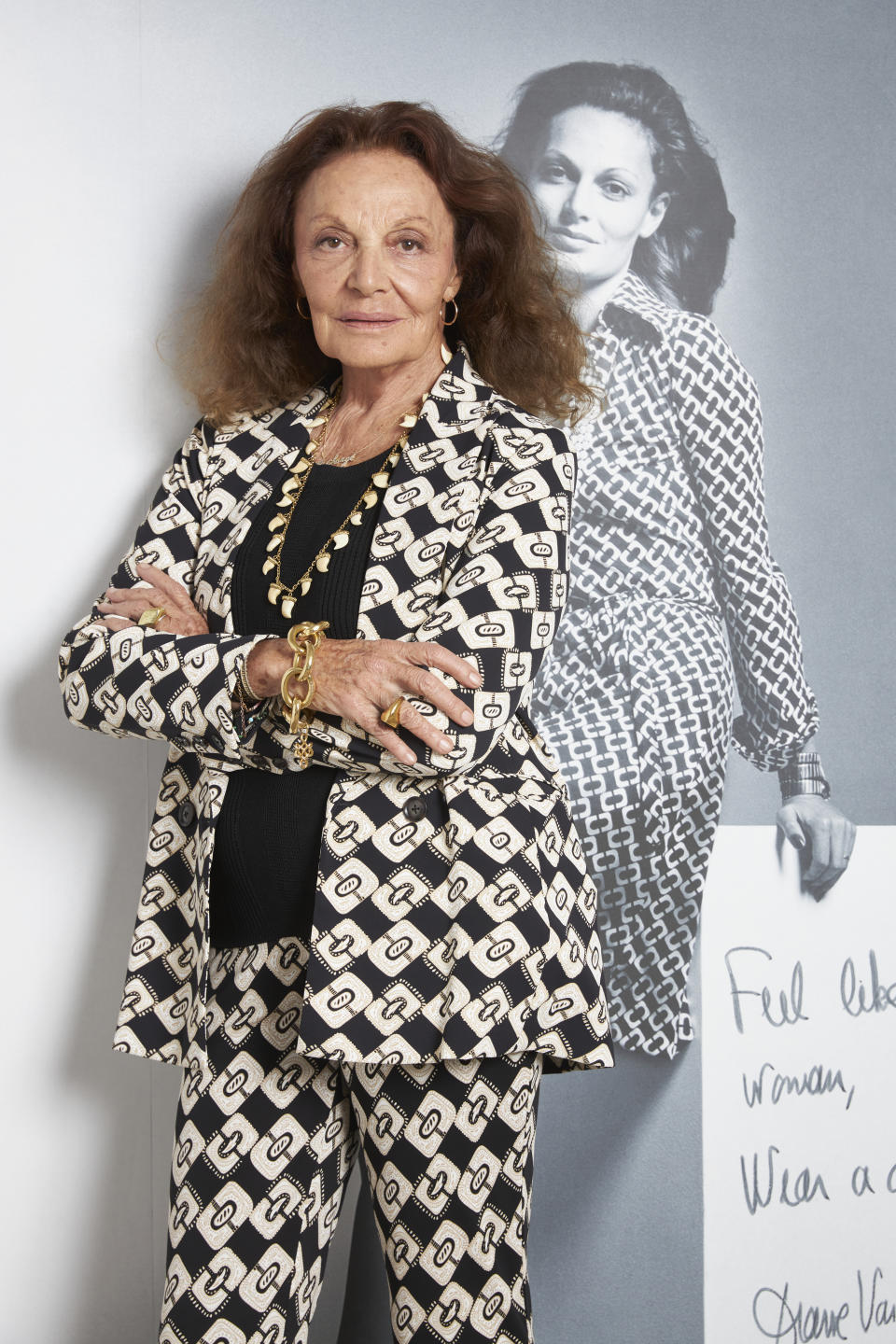
During her Brussels sojourn, von Furstenberg was occasionally trailed by the cameras of Sharmeen Obaid-Chinoy, a Pakistani-Canadian journalist, filmmaker and activist, who is making a documentary about the designer that’s due out in January on Hulu.
Von Furstenberg’s early years unfurled within a short radius of the Brussels Town Hall, and she and her sister-in-law Greta Helfin planted her first freestanding Belgian boutique in Antwerp back in 2006.
She’s warmed to the country’s charms, scenic countryside and cuisine — up to and including its famous “frites,” served as a precursor to dessert. It took two men to carry in the towering layer cake, topped with a miniature effigy of von Furstenberg, wearing a wrap dress, her arms raised triumphantly.
“I am happy I am still Belgian,” she declared to the crowd.
Earlier in the day, she suggested she still harbors other ambitions in her hometown: “Next time I come, I want to speak to the European Parliament.”
Best of WWD
Solve the daily Crossword

